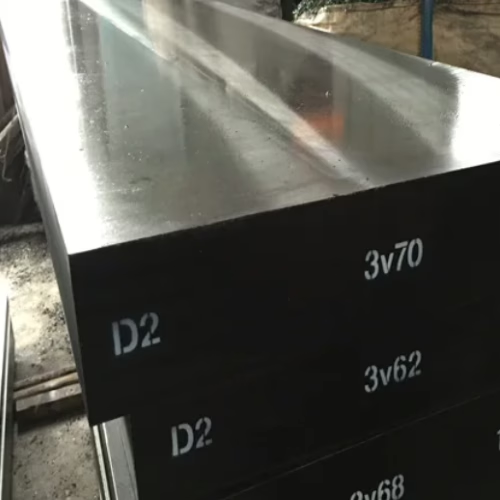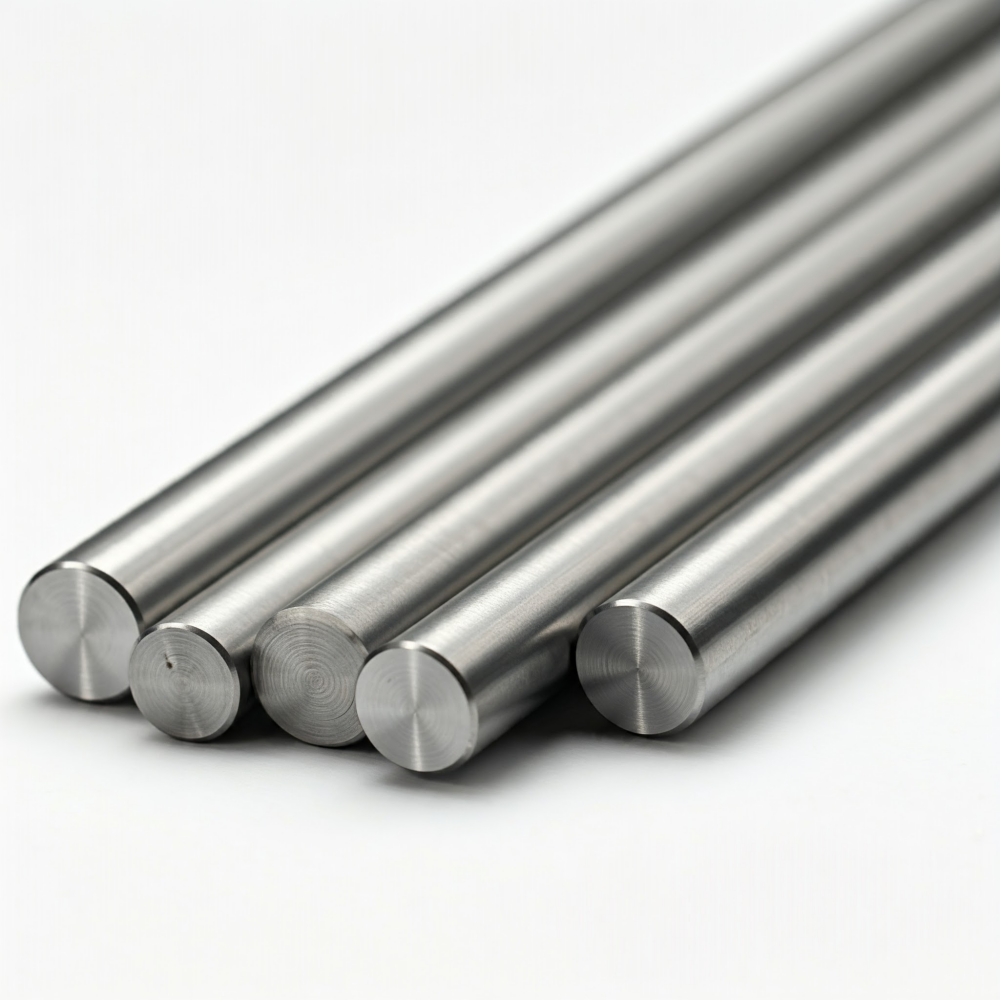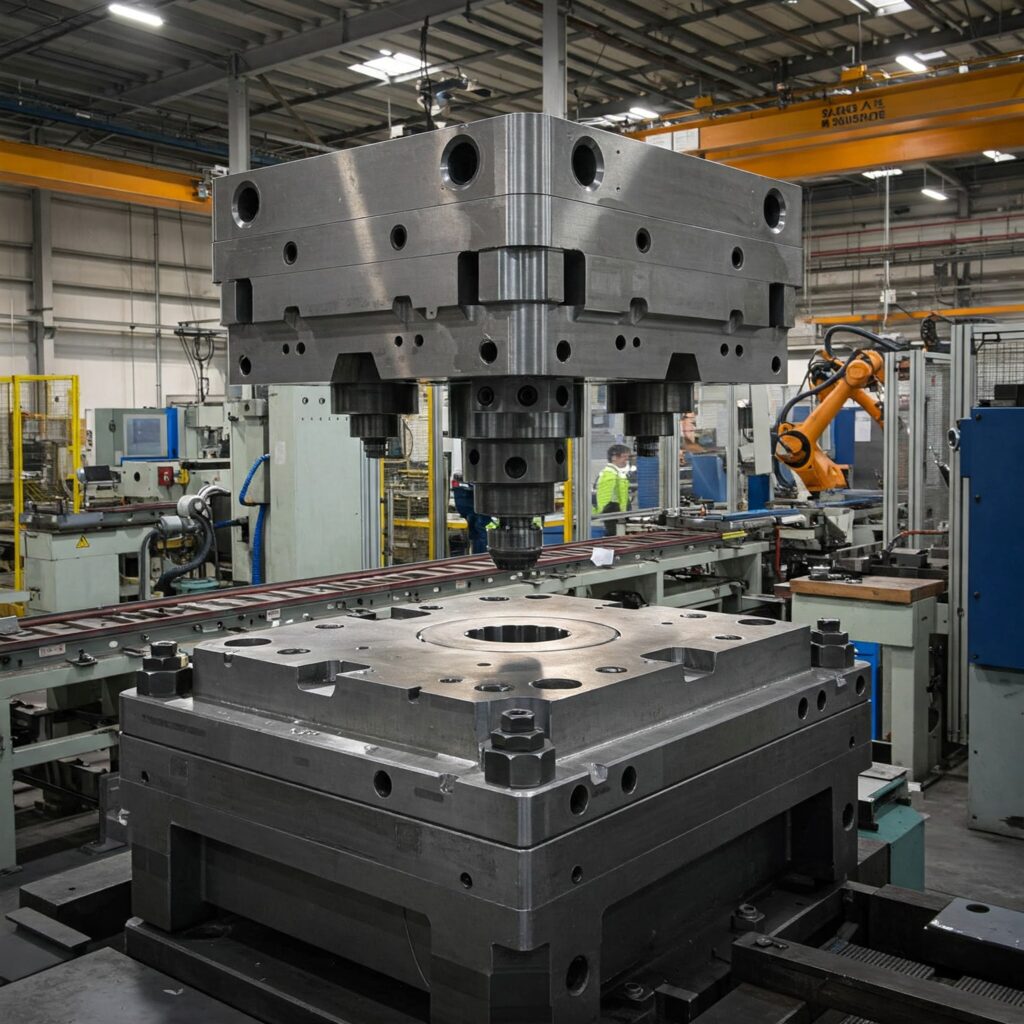As a professional tool steel supplier, we will provide you with a detailed introduction to the specific characteristics of D2 tool steel and its applications in tool manufacturing. It is the most common type of high-carbon, high-chromium cold-work tool steel. Among all the tool steels we supply, D2 has the largest volume of supply, including hot rolled and forged D2 round bar and flat bar. It is primarily suited for use at room temperature. The “D” in D2 originally stood for “designated for high-speed cutting,” but it was later discovered that it performed exceptionally well as a cold-worked die steel. Today, this steel is widely recognized for its excellent wear resistance and dimensional stability during the quenching process. Since it has an extensive range of applications, all cold-work tool steels use this steel as a reference standard.
Chemical Composition
The composition largely determines its performance.
- Carbon (C): approximately 1.55%. This high carbon content forms hard carbides, thereby achieving high hardness.
- Chromium (Cr): approximately 11.50% to 12.05%. The high chromium content significantly improves its wear resistance and provides a certain degree of corrosion resistance, although this corrosion resistance is not as good as that of stainless steel. The high chromium content also gives it a high hardenability.
- Molybdenum (Mo): Typically 0.70% to 1.10%. Molybdenum improves the hardenability, high-temperature strength, and resistance to softening.
- Vanadium (V): Typically 0.20% to 0.92%. Vanadium helps form hard carbides, significantly improving wear resistance and maintaining a fine grain structure.
- Manganese (Mn): Approximately 0.34% to 0.35%. Manganese improves hardenability and deoxidation.
- Silicon (Si): Around 0.30% to 0.31%. Silicon also enhances hardenability and can improve toughness.

Looking for D2 Tool Steel?
Fill out the form to get a fast quote from Aobo Steel — trusted quality, expert service.
Key Properties Relevant to Tool Making
- High Hardness: After heat treatment, this material can achieve a hardness of 60 to 62 HRC. In the quenched state, the hardness range is 60-64 HRC, and after tempering, the hardness is 60-61 HRC. In actual production, we take advantage of this high hardness characteristic.
- High Wear and Abrasion Resistance: It has excellent wear resistance. This is because it contains a large amount of high-hardness alloy carbides, especially chromium-rich carbides.
- Moderate Toughness: Although this steel has excellent wear resistance, its toughness is far inferior to that of other tool steels, such as the S series or A series, such as S7 and A2. In actual production, when used for cold work dies, although toughness is equally important, this material can still be a suitable choice. Additionally, based on our practical experience, hot-rolled D2 material exhibits better toughness than forged large-sized D2 steel. We analyze that this is because the carbides in hot-rolled material are smaller and more uniformly distributed.
- Dimensional stability: Minimal deformation during heat treatment, making it ideal for the manufacture of precision tools and molds. Air quenching also minimizes the risk of cracking and deformation. When air quenched at the appropriate quenching temperature, the expansion or contraction is only 0.0005 inches per inch.
- Machinability: It has excellent wear resistance, but this also makes it very difficult to machine. If the machinability rating for steel with a carbon content of 1% is set at 100, the rating for D2 steel is 45.
- Polishability and etchability: It has good polishability, making it suitable for plastic molds and other tools that require high surface finish.
- Weldability: It isn’t easy to weld using conventional methods.
Specific Toolmaking Applications
In the table below, I have listed the main uses of D2 steel and the characteristics that are utilized in these uses. These uses are not only found in some reference materials, but also summarize the patterns we have observed in our production practice. We welcome readers to share their thoughts with us.
| Application | Reason / Details |
| Blanking Dies and Punches | Excellent wear resistance, suitable for mass production, especially with hot-rolled, unpickled steel. |
| Cold Forming Dies | Excellent wear resistance and deformation resistance. Used for drawing dies (wire, bars, plates) and deep drawing dies (punches, ring dies). |
| Thread Rolling Dies | High wear resistance makes it suitable for long-term use in both circular and flat thread rolling dies. |
| Shear and Slitter Knives | Ideal for cold shearing of thin to medium-thick plates in mass production. It can also be used for hot trimming, but H11 is better for toughness. |
| Rolls and Forming Rolls | Excellent wear resistance. Used for cold-rolled rolls, especially threaded rolls and multi-roll mills. |
| Gauges and Precision Tools | Inherent dimensional stability makes it suitable for high-precision tools. |
| Piercing Punches and Dies | Excellent wear resistance. |
| Coining Dies | Can be used for coining dies and small aluminum parts. For deep cavities prone to cracking, O1, S5/S6, or A2 are better alternatives. |
| Cold Extrusion Tools | Recommended for cold extrusion punches and dies. Can be used with M2 tool steel for steel extrusion. |
| Plastic Molds/Inserts | High wear resistance allows its use for embedded cavities, but it’s not a primary application. P20 or H13 are more common for larger or complex cavities.1 |
Essentially, the excellent wear resistance and dimensional stability make it the material of choice for high-volume, long-term applications. However, its excellent wear resistance also makes it difficult to process and relatively brittle. Various factors need to be considered when selecting materials.
- References: Totten, George E., et al., editors. Handbook of Mechanical Alloy Design. Marcel Dekker, 2003. ↩︎


